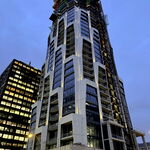CityStay
Active Member
Irrelevant indeed!Uh ... they are subway line numbers. Montreal doesn't have a Line 3 ... Pearson doesn't have a terminal 2. Should that stop people talking about Terminal 3?
We've talked about Montreal's 3-station Yellow line already, without discussions about whether it's a line or a linette(!?!?).
And what happens in 2030-2040-something when (if) "Line 3" disappears and becomes part of Line 2? Will Line 6 or UPS become Line 3?
? Most subway systems use different types of equipment on different lines. Many London lines have equipment that won't fit on other lines. Montreal's Line 3 was planned as steel-wheel from the original 1961 announcement, with the others being rubber-tired (also in the original 1961 announcement). I'm really not sure how this is relevant to the announcement.
Montreal has colours, not numbers, so unless the number 3 has a corresponding colour... Whatever they were or were not thinking in 1961 is entirely irrelevant.
I haven't been/wasn't talking about Montreal's yellow line at all so that is also irrelevant. But it seems to me that, despite it being only 3 stations, it is entirely more useful than the Ikea Express shuttle or the Scarborough Rattletrap. It's a vital commuter link that dives under the river twice and connects the South Shore and park Jean Drapeau with the island. And Longueuil is the 5th busiest station in the network. Do any Line 3 or 4 stations even crack the top 20?
London is absolutely irrelevant as it is larger than the 3 largest Canadian cities combined and has more tubeage than all Canadian cities combined. Any comparisons between London, New York, Tokyo etc. and any Canadian city is always irrelevant. Yet they still manage to not use different equipment on every line.
Airport terminals and transit lines? Starts with an 'I ' and ends with a 't '!





